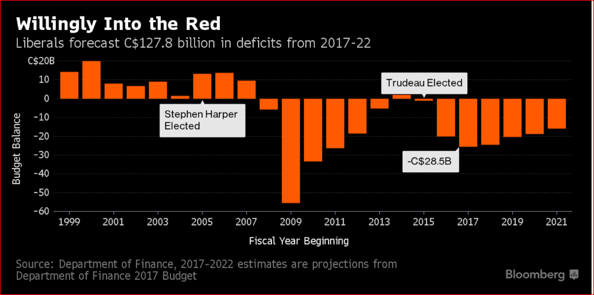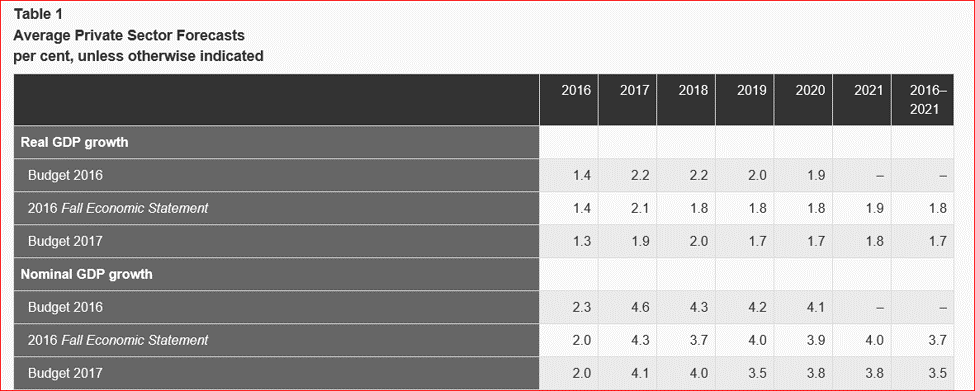Canadian Federal Budget Is In A Holding Pattern
Canadian Finance Minister Bill Morneau revealed his second budget on March 22nd which very much is a replica of the 2016 budget. The Federal government has its hands tied for the time being while awaiting the evolution of U.S. trade and tax policies. Coming as no surprise, the budget forecasts deficits totalling C$127.8 billion ( US$96 billion) over next six years, excluding a new C$3 billion annual risk-adjustment buffer ( see Chart 1).
Chart 1 Forecast Deficits

The budget holds the line with respect to maintaining the debt-to-GDP ratio at 31 per cent, a figure that many economists believe is within the acceptable range, certainly when measured against other developed nations.
Many more conservative analysts decry the fact the government do not set a path towards a balanced budget. It can be argued that such a path, if drawn, would have to know and incorporate specific changes in U.S. trade policies. In a sense, the Canadian government is in a holding pattern awaiting developments south of the border.
However, there is more than just a wait-and –see approach that is holding back a return to a balanced budget. Canada’s growth prospects have weakened over the past 12 months (see Table 1). Nominal growth for the 2016-2021 years has been downgraded from 3.7 to 3.5 per cent annually. This downgrade results in lower revenues and higher expenditures for transfer payments to individuals.
Globally, there are several risk factors that have hit Canada’s growth prospects. In addition to the uncertainty associated with U.S. economic policy, there is the timing and nature of Brexit and upcoming elections in France and Germany. On the export side, oil prices continue to remain low and non –energy exports continue to disappoint, both contributing to a weaker economy.
(Click on image to enlarge)

Source: Federal Budget Papers
At home, Canadian household debt levels hold back domestic spending. Combined with accelerating housing costs, these represent considerable risks to the economy.
Realistically, the government is caught between a rock and a hard place. A return to a balanced budget would necessitate an austerity budget. Canadians did not opt for an austerity budget in electing this government, since such a budget would likely reduce economic growth.
Disclosure: None.



